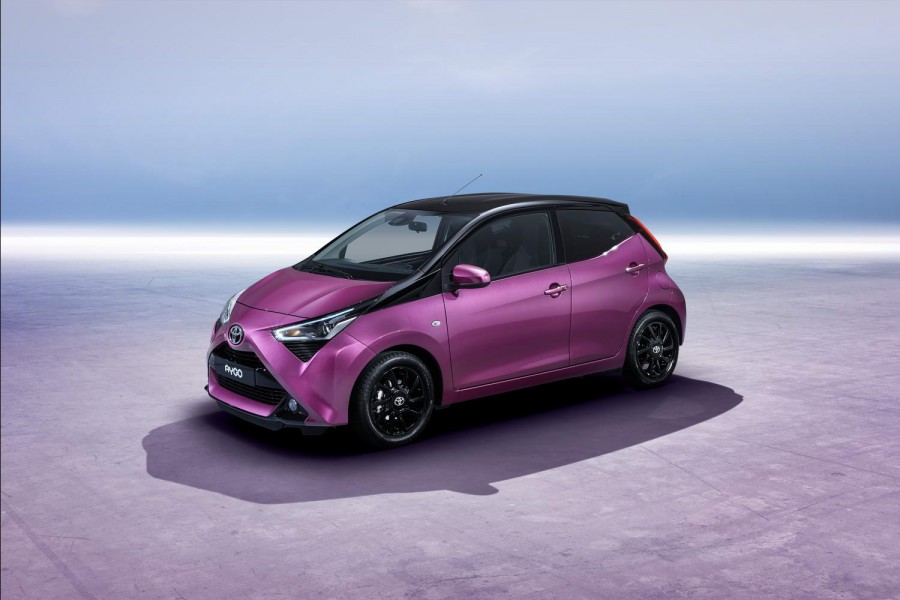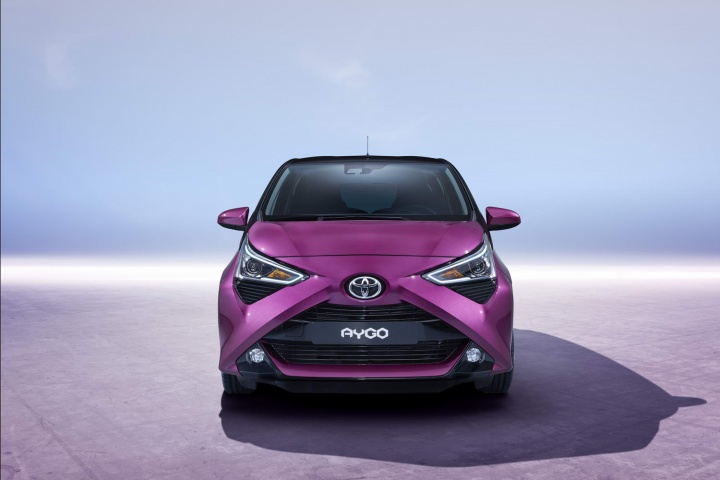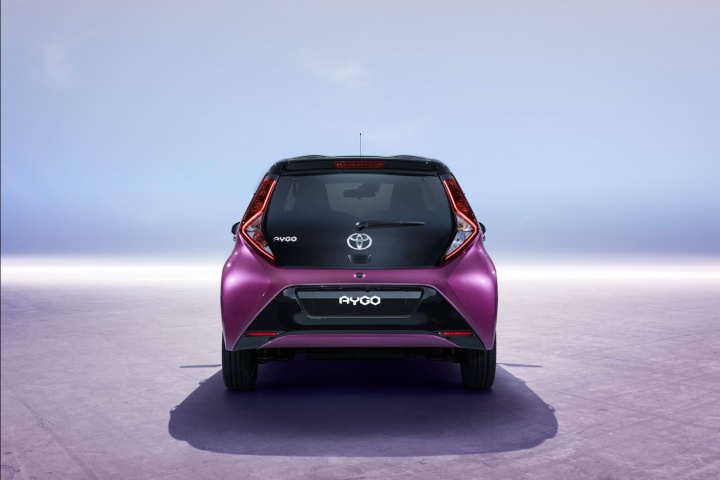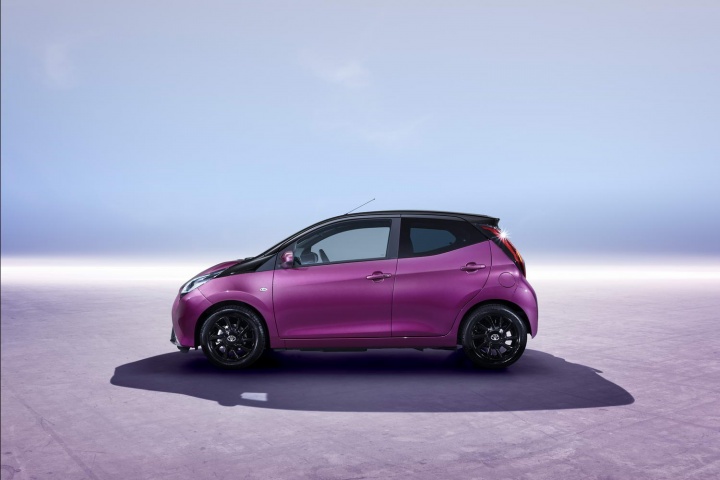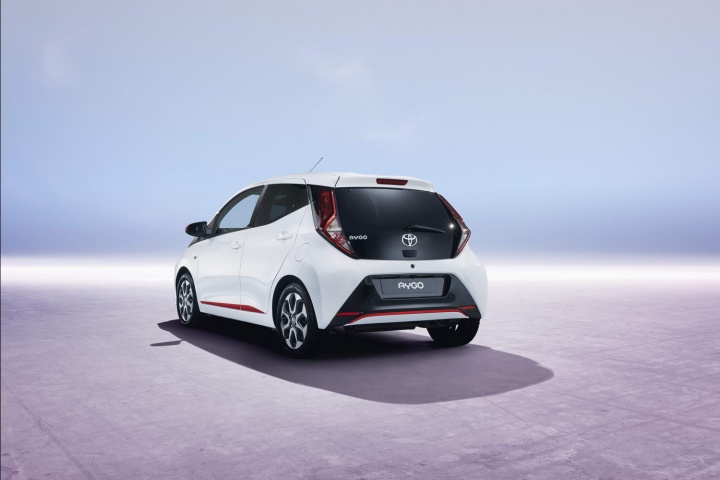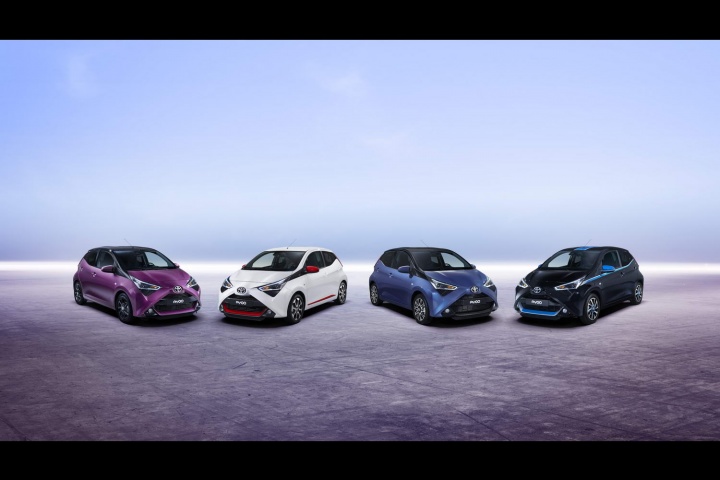What's the news?
Given it was introduced in 2014, it's now midlife model facelift time for Toyota's smallest model, the Aygo city car. The revised hatchback was displayed at the Geneva Motor Show.
Part of the Aygo Mk2's appeal is its distinctive X-graphic face, which Toyota has tried to preserve. It has done this by transforming it from a two-dimensional graphic on the outgoing model, to an actual three-dimensional element of the Aygo's architecture for the facelift.
This has necessitated new headlights with integral daytime running lamps, the revised units incorporating small grilles beneath them that can be black, gloss black or silver. At the rear, new outer lenses for the LED tail lamps with a fresh signature ensure you shouldn't mistake this 2018 variant for the older Toyota.
There are also new exterior colours and alloy wheel designs for the exterior, but moving inside, the instrument cluster has upgraded graphics with a 3D look and a different illumination colour, while most trim grades will feature updated seat fabrics, with a Quartz Grey and Piano Black colour scheme as an upmarket option.
It's not just a visual update, though, as the mechanicals have had a tweak. The 1.0-litre, three-cylinder, 12-valve normally aspirated petrol engine in the Aygo now meets the latest Euro 6 emissions regulations, thanks to major engine changes that include a new dual fuel-injector system, a higher compression ratio, the addition of low-friction components, a cooled exhaust gas recirculation set-up and an improved balancer shaft for less vibrations when the car is idling. All these changes also elicit more power, the output up 3hp to a 72hp peak at 6,000rpm. Torque, though, has marginally dropped from its old peak of 95Nm at 4,300rpm, to 93Nm at 4,400rpm on the new engine.
However, Toyota says there is 'better torque delivery at lower engine speed, giving an even better driving experience in urban traffic' and the upswing in horsepower has trimmed four-tenths from the Aygo's 0-100km/h time - the city car can now check off the benchmark sprint in 13.8 seconds. Top speed is also marginally increased to 161km/h, but despite this extra performance the eco-stats (once homologated) should also be improved - Toyota is already claiming the economy to have gone from 4.1 litres/100km (68.9mpg) previously to 3.9 litres/100km (72.4mpg) on the new Aygo. CO2 emissions have not yet been pegged, but Toyota says they will be less than the old model's 95g/km.
Finally, the Japanese firm also says it has altered the suspension set-up and the steering software, in order to make the Aygo more reactive and precise to driver inputs, while sealing and sound absorption materials have been added to the dashboard, A-pillars, all doors and the rear deck, bringing about a 'marked reduction' in noise and vibration within the cabin at all engine speeds.
Anything else?
The Aygo Mk2, aimed at a younger and more style-conscious clientele, has been a conquest sales success for Toyota in Europe, attracting new customers to the brand as part of sales of more than 85,000 units and a 6.6 per cent market share. The new one should continue this trend, then, when it goes on sale later this year - and we'll have more details on exact trim grades, specifications and prices for Ireland as soon as Toyota confirms them.
